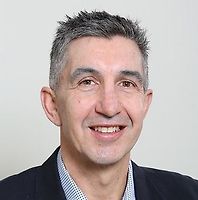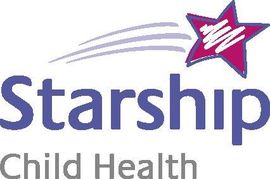Central Auckland > Public Hospital Services > Starship Child Health >
Starship Paediatric Surgery and Urology
Public Service, General Surgery, Paediatrics, Urology
Description
- Abdominal surgery
- Thoracic surgery
- Neonatal surgery
- Genitourinary surgery
- Oncologic surgery
- Minimally invasive surgery
- Trauma surgery.
Consultants
-

Dr Kimberly Aikins
Paediatric Surgeon
-

Mr John Atkinson
Paediatric Surgeon
-

Dr Stephen Evans
Paediatric Surgeon
-

Mr James Hamill
Paediatric Surgeon
-

Dr Shareena Lala
Paediatric Surgeon
-

Dr Phil Morreau
Paediatric Surgeon
-

Mr Vipul Upadhyay
Paediatric Surgeon
Referral Expectations
Hours
- General Paediatric Surgical clinics are held at Greenlane Clinical Centre and Starship.
- Your clinic day and time will depend on which surgeon you will be seeing.
- Weekly clinics are also run at Manukau SuperClinic and fortnightly at Waitakere Hospital.
- Regular visiting clinics currently take place in Whangārei, Kaitaia, New Plymouth and Gisborne.
- The Neurogenic Bladder Clinic is held every 4th Wednesday afternoon.
- The Urodynamics Clinic is held on alternate Tuesday mornings from 10:30 - 12:45.
- Acute or urgent referrals are seen in the Children's Emergency Department.
Common Conditions/ Procedures / Treatments
Umbilical hernias are very common in infants, with one in 10 young children being affected. They are especially common in babies who are premature (born early). The hernia appears as a lump in the navel that may get bigger when your child is laughing, coughing, crying or using the toilet. It may shrink when your child is relaxed or lying down. It is not painful. Most of these resolve by the age of three years. It is extremely rare for them to cause complications. Referral can be made once the child has turned three years old if the hernia still persists.
Umbilical hernias are very common in infants, with one in 10 young children being affected. They are especially common in babies who are premature (born early). The hernia appears as a lump in the navel that may get bigger when your child is laughing, coughing, crying or using the toilet. It may shrink when your child is relaxed or lying down. It is not painful. Most of these resolve by the age of three years. It is extremely rare for them to cause complications. Referral can be made once the child has turned three years old if the hernia still persists.
Umbilical hernias are very common in infants, with one in 10 young children being affected. They are especially common in babies who are premature (born early).
The hernia appears as a lump in the navel that may get bigger when your child is laughing, coughing, crying or using the toilet. It may shrink when your child is relaxed or lying down. It is not painful.
Most of these resolve by the age of three years. It is extremely rare for them to cause complications. Referral can be made once the child has turned three years old if the hernia still persists.
An inguinal hernia is an abnormal bulge, or protrusion, that can be seen and felt in the groin area (the area between the abdomen and the thigh). An inguinal hernia develops when a portion of the intestine (bowel), along with fluid, bulges through the muscle of the abdominal wall. Inguinal hernias in children result from a weakness in the abdominal wall that is present at birth. The bulge in the groin might only be noticed when the child is crying, coughing, or straining during a bowel movement, or it might appear to be larger during these times. Of the newborns who have inguinal hernias, 90 percent are boys. Hernias usually need to be surgically repaired to prevent intestinal damage and further complications. The surgery can usually be done as a day case although infants less than 46 weeks post conception usually require an overnight stay in hospital. Occasionally, if the weakness or defect in the abdominal wall is small, this can result in a portion of intestine becoming trapped. This is called an incarcerated hernia and can cause problems such as severe pain, nausea, vomiting, or absence of bowel movements. Larger abdominal wall defects allow the intestine to move freely in and out of the weakened abdominal wall and do not tend to be as painful.
An inguinal hernia is an abnormal bulge, or protrusion, that can be seen and felt in the groin area (the area between the abdomen and the thigh). An inguinal hernia develops when a portion of the intestine (bowel), along with fluid, bulges through the muscle of the abdominal wall. Inguinal hernias in children result from a weakness in the abdominal wall that is present at birth. The bulge in the groin might only be noticed when the child is crying, coughing, or straining during a bowel movement, or it might appear to be larger during these times. Of the newborns who have inguinal hernias, 90 percent are boys. Hernias usually need to be surgically repaired to prevent intestinal damage and further complications. The surgery can usually be done as a day case although infants less than 46 weeks post conception usually require an overnight stay in hospital. Occasionally, if the weakness or defect in the abdominal wall is small, this can result in a portion of intestine becoming trapped. This is called an incarcerated hernia and can cause problems such as severe pain, nausea, vomiting, or absence of bowel movements. Larger abdominal wall defects allow the intestine to move freely in and out of the weakened abdominal wall and do not tend to be as painful.
An inguinal hernia is an abnormal bulge, or protrusion, that can be seen and felt in the groin area (the area between the abdomen and the thigh). An inguinal hernia develops when a portion of the intestine (bowel), along with fluid, bulges through the muscle of the abdominal wall.
Inguinal hernias in children result from a weakness in the abdominal wall that is present at birth. The bulge in the groin might only be noticed when the child is crying, coughing, or straining during a bowel movement, or it might appear to be larger during these times. Of the newborns who have inguinal hernias, 90 percent are boys.
Hernias usually need to be surgically repaired to prevent intestinal damage and further complications. The surgery can usually be done as a day case although infants less than 46 weeks post conception usually require an overnight stay in hospital.
Occasionally, if the weakness or defect in the abdominal wall is small, this can result in a portion of intestine becoming trapped. This is called an incarcerated hernia and can cause problems such as severe pain, nausea, vomiting, or absence of bowel movements. Larger abdominal wall defects allow the intestine to move freely in and out of the weakened abdominal wall and do not tend to be as painful.
A hydrocoele is a collection of fluid in the scrotal sac of male infants that drains downward from the abdominal cavity. The baby's scrotum will appear swollen or large, but he will not have other symptoms. Unlike an inguinal hernia, a hydrocoele generally is not painful and does not have noticeable symptoms. Most of these will resolve by the age of 2 years. If it persists after 2 years of age then you may need referral to see the paediatric surgeon.
A hydrocoele is a collection of fluid in the scrotal sac of male infants that drains downward from the abdominal cavity. The baby's scrotum will appear swollen or large, but he will not have other symptoms. Unlike an inguinal hernia, a hydrocoele generally is not painful and does not have noticeable symptoms. Most of these will resolve by the age of 2 years. If it persists after 2 years of age then you may need referral to see the paediatric surgeon.
Undescended testes occur when one or both of the testicles do not reach the scrotum and remain inside the groin and occasionally the abdomen. The condition occurs in two to three percent of newborns. They are more common in premature babies. In approximately 50% of cases a testicle that is undescended at birth will naturally correct itself by the age of three months. If a testicle is still undescended after three months of age, a referral to a surgeon is required. At the appointment, the surgeon will examine your child carefully to see if the testis can be felt in the body. If the testis can be felt then a reasonably straightforward operation is required to bring down and fix the testicle in the scrotum. This is usually performed between 9 and 12 months of age. If the testes cannot be felt, a different type of operation would be performed so that the surgeon can check where the testes are. In some cases, the testes are absent. Depending on the type of surgery your child has he may need to stay in hospital overnight. For straightforward cases you will generally be able to go home later the same day. Leaving an undescended testicle uncorrected can contribute to infertility and increases the risk of testicular cancer in later life.
Undescended testes occur when one or both of the testicles do not reach the scrotum and remain inside the groin and occasionally the abdomen. The condition occurs in two to three percent of newborns. They are more common in premature babies. In approximately 50% of cases a testicle that is undescended at birth will naturally correct itself by the age of three months. If a testicle is still undescended after three months of age, a referral to a surgeon is required. At the appointment, the surgeon will examine your child carefully to see if the testis can be felt in the body. If the testis can be felt then a reasonably straightforward operation is required to bring down and fix the testicle in the scrotum. This is usually performed between 9 and 12 months of age. If the testes cannot be felt, a different type of operation would be performed so that the surgeon can check where the testes are. In some cases, the testes are absent. Depending on the type of surgery your child has he may need to stay in hospital overnight. For straightforward cases you will generally be able to go home later the same day. Leaving an undescended testicle uncorrected can contribute to infertility and increases the risk of testicular cancer in later life.
In approximately 50% of cases a testicle that is undescended at birth will naturally correct itself by the age of three months. If a testicle is still undescended after three months of age, a referral to a surgeon is required.
At the appointment, the surgeon will examine your child carefully to see if the testis can be felt in the body. If the testis can be felt then a reasonably straightforward operation is required to bring down and fix the testicle in the scrotum. This is usually performed between 9 and 12 months of age. If the testes cannot be felt, a different type of operation would be performed so that the surgeon can check where the testes are. In some cases, the testes are absent.
The foreskin is normally non-retractile at birth and it is common for some boys to not have a retractile foreskin until after puberty. At no time should the foreskin be forcibly retracted. If your son has a tight foreskin, ‘phimosis’ this can be managed by your doctor (GP) which normally involves the application of a steroid cream to the area for 4-6 weeks.
The foreskin is normally non-retractile at birth and it is common for some boys to not have a retractile foreskin until after puberty. At no time should the foreskin be forcibly retracted. If your son has a tight foreskin, ‘phimosis’ this can be managed by your doctor (GP) which normally involves the application of a steroid cream to the area for 4-6 weeks.
The foreskin is normally non-retractile at birth and it is common for some boys to not have a retractile foreskin until after puberty. At no time should the foreskin be forcibly retracted.
If your son has a tight foreskin, ‘phimosis’ this can be managed by your doctor (GP) which normally involves the application of a steroid cream to the area for 4-6 weeks.
Hypospadias (opening below) is an abnormal appearance of the penis, characterised by the abnormally situated opening of the urethra. This may be associated with a curvature of the penis. This condition is seen in 1 in 300 - 500 male births. There are varying degrees of severity and surgery is required to correct the hypospadias. The aims of surgery are to: provide a straight penis move the urethral opening as far forward as possible to enable normal micturition (passing urine) and intercourse.
Hypospadias (opening below) is an abnormal appearance of the penis, characterised by the abnormally situated opening of the urethra. This may be associated with a curvature of the penis. This condition is seen in 1 in 300 - 500 male births. There are varying degrees of severity and surgery is required to correct the hypospadias. The aims of surgery are to: provide a straight penis move the urethral opening as far forward as possible to enable normal micturition (passing urine) and intercourse.
Hypospadias (opening below) is an abnormal appearance of the penis, characterised by the abnormally situated opening of the urethra. This may be associated with a curvature of the penis.
This condition is seen in 1 in 300 - 500 male births.
There are varying degrees of severity and surgery is required to correct the hypospadias.
The aims of surgery are to:
- provide a straight penis
- move the urethral opening as far forward as possible to enable normal micturition (passing urine) and intercourse.
Document Downloads
- Gastrostomy Care (PDF, 1.8 MB)
- Urodynamic Information (PDF, 1.2 MB)
- Hypospadias (PDF, 226 KB)
- Hypospadias Graft Tissue (PDF, 173.7 KB)
- Anorectal Malformations (PDF, 287.5 KB)
- Hirschsprungs Disease (PDF, 225.1 KB)
- Pyeloplasty (PDF, 598.1 KB)
- Caecostomy/ACE (PDF, 852.5 KB)
- Mitrofanoffs (PDF, 951.2 KB)
- Bladder Augmentation (PDF, 987.4 KB)
Visiting Hours
Visiting hours are 8am - 8pm. The children have a rest period between 1 - 3pm and visitors are discouraged during this time.
Contact Details
Starship Child Health, Central Auckland
Central Auckland
2 Park Road
Grafton
Auckland 1023
Street Address
2 Park Road
Grafton
Auckland 1023
Postal Address
Starship Child Health
Private Bag 92 024
Auckland Mail Centre
Auckland 1142
New Zealand
Was this page helpful?
This page was last updated at 11:55AM on December 10, 2024. This information is reviewed and edited by Starship Paediatric Surgery and Urology.

